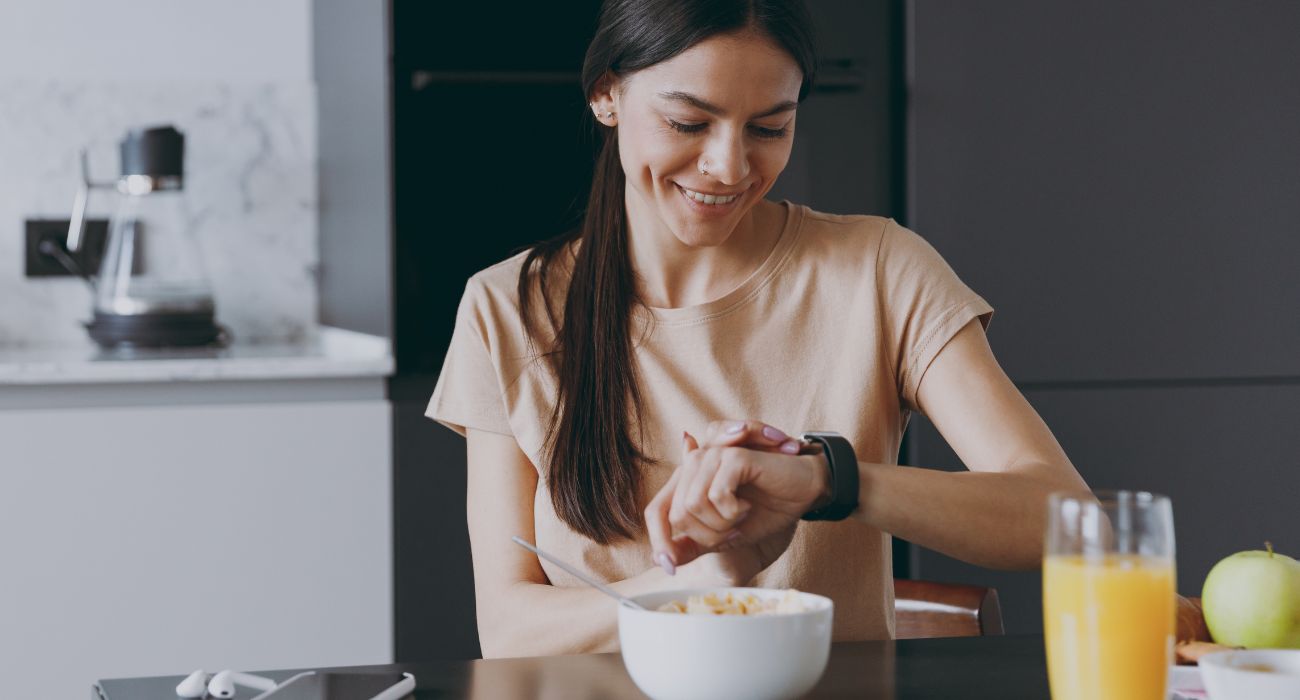Do you tend to go without eating during the day and then help yourself to a hefty evening meal? Or do you prefer to munch on snacks and smaller meals throughout the day? While we might all have our own eating habits, recent research suggests when we eat matters.
A new study from King’s College London was presented at the European Nutrition Conference in Belgrade, Serbia, on November 14. Although the findings have yet to go through the peer review process, they provide valuable insight into how meals might be spaced out for optimal health.
The research dove into the effects of different eating schedules among a whopping 37,545 people, according to the King’s College London press release.
“This is the largest study outside of a tightly controlled clinic to show that intermittent fasting can improve your health in a real world setting,” explained Dr. Sarah Berry from King’s College London and chief scientist at ZOE, the fitness company behind the research.
The idea of “eating windows” has come to the forefront of conversation with the rise of individuals choosing intermittent fasting.
As previously reported in The Dallas Express, experts from the world of dieting tout intermittent fasting as a one-size-fits-all solution for weight loss. The practice involves restricting caloric intake for relatively short periods of time in order better to manage blood sugar and insulin levels in the body. While intermittent fasters cannot eat outside a fixed window, they can drink zero-calorie beverages, such as water and black coffee.
How restrictive does one need to be to reap the benefits of intermittent fasting?
Some subscribe to the 5:2 Diet, where fasters eat normally five days a week and then limit their caloric intake to around 500-600 for two non-consecutive days.
Others opt for the popular 16:8 Method. Here, fasters have an eating window of 8 hours and refrain from eating the remaining 16 hours each day. This usually amounts to skipping breakfast.
However, King’s College London’s research suggests a 10-hour eating window might be best.
“A 10-hour eating window, which was manageable for most people, and improved mood, energy levels and hunger,” explained Berry.
These results were yielded by asking participants, who were monitored by scientists via the ZOE Health app, to eat normally for one week and then switch to a 10-hour eating window for two weeks.
Of the 37,545 original participants, 36,231 opted for additional weeks of this eating schedule, while 27,371 stood out as being “highly engaged” in their health journey. The participants’ level of engagement proved to have a vital impact on the program’s effectiveness.
“We found for the first time that those who practiced time-restricted eating, but were not consistent day to day, did not have the same positive health effects as those who were dedicated every day,” Dr. Berry said.
Another King’s College London and ZOE researcher, Kate Bermingham, noted that the study contributes to the understanding that healthy eating isn’t just about what you eat but also when you eat.
“Findings [show] that we don’t need to be eating all the time. Many people will feel satiated and even lose weight if they restrict their food to a 10-hour window,” Bermingham said.
At a time when obesity rates are on the rise, many individuals are looking to lose weight and reduce their risk for type 2 diabetes, with some turning to appetite-suppressing medications or restrictive diets, as reported by The Dallas Express.
However, these strategies come with health risks of their own.
As The Dallas Express previously reported, weight-loss drugs have been linked to certain adverse effects, such as stomach paralysis, and a 2022 study using a sample size of 24,000 adults over the age of 40 found that skipping breakfast correlates to a higher risk of dying from cardiovascular disease.






